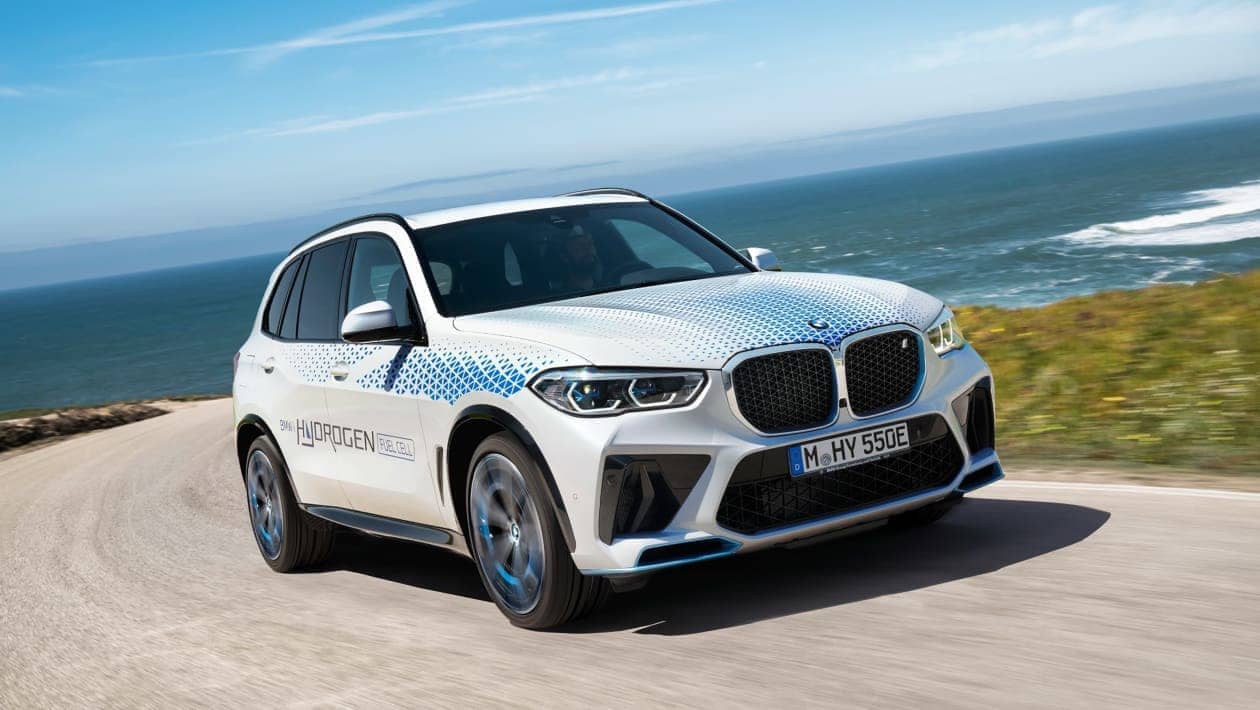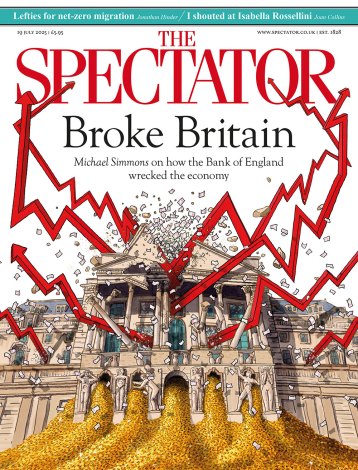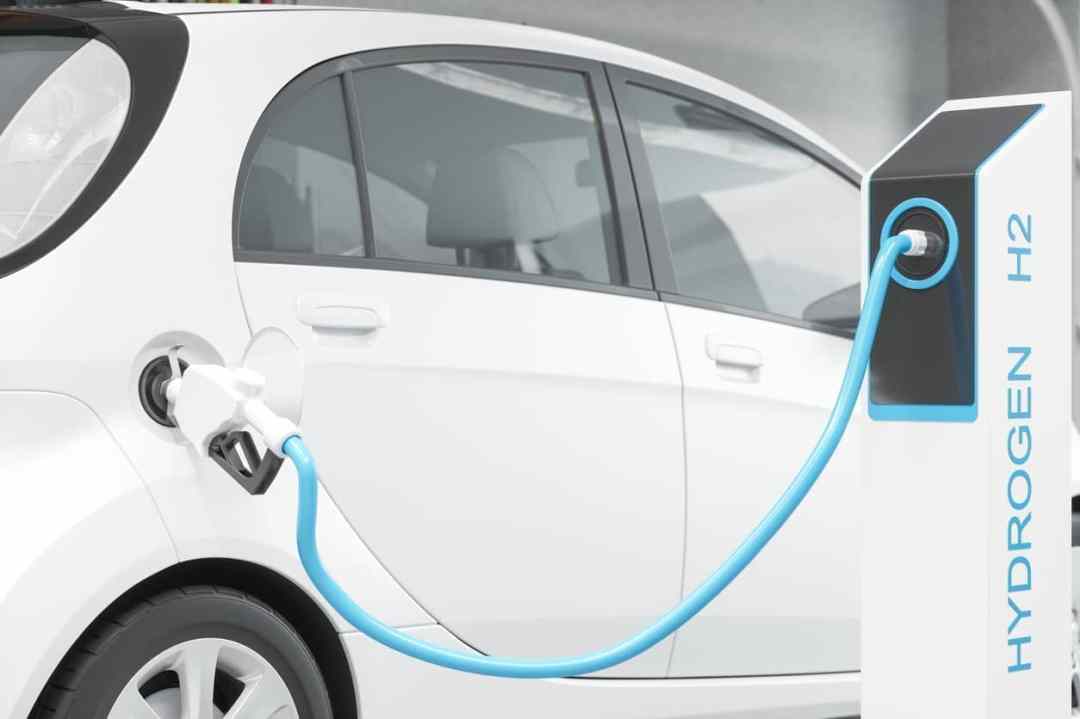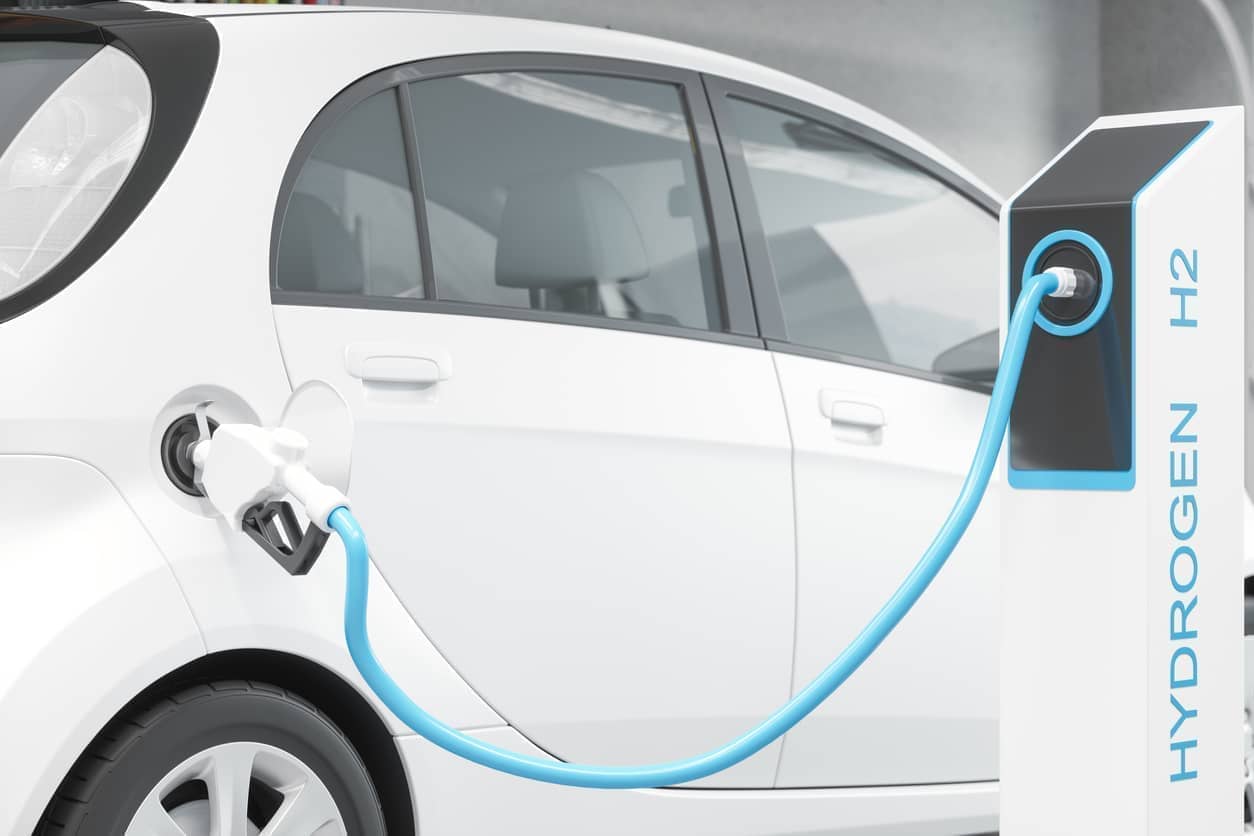Does the future of motoring really lie in electric cars?
Battery powered motors are now commonplace, but a few intrepid British drivers have gone for hydrogen fuel cell models instead. They currently have two choices. The £69,495 Hyundai Nexo (28 sales) and the £55k plus Toyota Mirai (about 200 owners including James May), so they’re hardly cheap. Eventually there will be more, including a BMW X5 4×4 due to be launched later in 2022. Jaguar Land Rover is also said to be looking at the technology for its heftier offerings.
These cars take minutes to re-fuel, go further between top ups and, unlike battery cars, aren’t adversely affected mileage-wise by cold weather. The only thing they emit is water vapour.
Ex-lawyer Jonny Goldstone runs 65 fuel cell Toyota Mirais and 150 fully electric VW ID.3s, which isn’t as excessive as it sounds when you discover that he co-owns Green Tomato Cars, a London-based, ‘environmentally friendly’ taxi service.
‘As a car the Mirai is absolutely fine. It’s not the swishest thing going, but its reliable, comfortable in the back and for the driver, which is important to us,’ he said. Goldstone’s fuel cell fleet has covered over three million miles, and has proved impregnably reliable. Have these cars been cost effective compared to the electric VWs?
‘Overall, hydrogen has a similar cost per mile to (a tank of) unleaded petrol. The cost of fast charging an electric car like the ID.3 is around 40 per cent less compared to petrol. So electric wins on that analysis. Hydrogen wins in terms of speed and range. Fast chargers give you about 80 per cent in 30 minutes, and you get well over 200 miles per full charge. The Mirai gets up to 380 miles and will re-fuel in 3-4 minutes.’
Finding somewhere to re-fuel one in the first place would be problematic for most drivers. According to the UKH2Mobility lobby group, five hydrogen stations are dotted around the M25. Swindon, Rotherham and Aberdeen have one apiece. You’d need at least 400 more to make fuel cell cars truly usable, and these would need to be served by tankers, or have on site production plants, which the Petrol Retailer’s Association said would cost about £1m each.
These cars take minutes to re-fuel, go further between top ups and, unlike battery cars, aren’t adversely affected mileage-wise by cold weather. The only thing they emit is water vapour.
Still, the technology seems to have come of age design-wise, so why aren’t there more fuel cell cars?
‘Elon Musk turned up,’ said Goldstone, who nevertheless describes himself as ‘a huge fan’ of the electric car magnate and professional controversialist’s products. Musk has called fuel cells ‘fool cells,’ claiming cars making their own electricity with chemical processes are less efficient. Fans counter that batteries are heavy, and there are environmental penalties associated with mining the metals that go into them, the energy used in their production and re-cycling their toxic innards.

Then there’s the issue of where the electricity and hydrogen are made. There are C02-free methods but, proving that there’s no such thing as a free ride, coal and gas power stations are sometimes used to generate electricity (meaning plenty of Chinese electric cars are effectively running on anthracite), and hydrogen can be a by-product of refining fossil fuels. In these circumstances, both shift rather than get rid of the pollution. So-called green hydrogen is the more eco friendly alternative where solar and wind power are exclusively used to electrolyse water and create hydrogen.
Still, before Musk made battery electric cars fashionable, many vehicle makers thought that hydrogen was the way to go. Some people still do. Jo Bamford, heir to the JCB digger maker, is one.
‘If I could give you a car that cost the same as the one you’re driving today and could be filled up in the same way, wouldn’t you buy it?’ he said.
He thinks China will monopolise electric battery production, claiming its factories can do this more cheaply than British ones could, and that it controls massive stocks of elements like lithium and cobalt that go into them.
‘Batteries are here to stay, but hydrogen is going to make up 20 per cent of the world’s energy mix. We’ve missed the boat on battery production. Let’s not miss the boat on hydrogen,’ he said.
Bamford is boss of Wrightbus, best known as maker of London’s humpbacked ‘Borismaster’ buses. His company is starting to build hydrogen fuel cell powered vehicles. He also chairs Ryze Hydrogen, which makes and distributes the stuff. He’s hardly unbiased, but is genuinely evangelistic about the technology, although conceding that making fuel cell cars truly affordable and convenient would mean a massive change in industrial strategy.
‘I wouldn’t start with cars,’ he said, claiming that trucks and buses, which cover longer distances, and lose money when not working, would benefit from the greater range, squirt-and-go re-fulling and not having to lug batteries around. If he’s right, in a decade we could see HGVs and buses dribbling warm water into the gutter instead of chuffing out CO2 and particulates.
If there was a network of lorry hydrogen fuelling points, the potential to expand these for cars is obvious.
Tesla-owning motoring pundit Quentin Willson is not a fan of hydrogen in cars however. ‘It’s nuts,’ he said. ‘Take 100 watts of electricity produced by a wind turbine. It has to be turned in to hydrogen, compressed, chilled and moved by tanker before it can power the car. In the end, you only get about 30 per cent of that 100 watts. Electric cars are around 85 per cent efficient.’
Robert Steinberger-Wickens is the University of Birmingham’s professor in fuel cells and hydrogen research. He suggests some electric car efficiency claims are over egged (‘between 60 and 90 per cent’). For sub 150-mile journeys he thinks battery electrics have the edge efficiency-wise over fuel cell cars. But in a hydrogen car you can at least drive from London to Manchester without stopping ‘for hours to charge.’
The professor sees a grim future of electric car batteries going ‘phut’ thanks to repeated fast charges (‘it’s simple physics’), forests of charging posts and an electricity grid wilting as it served legions of cars plugged into them.
He also suggests that commercial charging points are vastly more expensive per re-charge than their domestic equivalents, and here at least might share some common ground with Quentin Willson, who has started a lobby group called FairCharge, which is calling for charging point pricing transparency. The consensus ends there however.
‘It’s an urban myth that car and phone batteries are the same,’ said Willson. ‘You can find Teslas that have done 300-400,000 miles, and if you look on our roads, people are fitting these cars into their lives without problems.’ He claims that advances in battery technology mean that they will rely less on mined precious metals, talks about lithium extracted from clay, Tesla’s cobalt-free battery, silicone anodes (whatever they are) and a fast-growing battery re-cycling industry. He thinks predictions that the National Grid will be sucked dry by electric cars are bunk.
‘This is epoch making. We just don’t have to burn things anymore,’ said Willson who, like Jo Bamford, is unafraid of bold claims.
Professor Steinberger-Wickens, who is exasperated by what he sees as ‘a total lack of strategy on energy,’ thinks car makers themselves should stump up the cost of a hydrogen car filling station network, and wonders why none of them has built a plug-in model, that combined battery and fuel cell technologies.
Quentin Willson would doubtless rubbish these aspirations. Last year just over 190,000 battery cars were sold in Britain, so does this mean he’s won the argument?
It would seem so, but business owner Jonny Goldstone is not so sure. ‘There isn’t a “best solution” that will trump everything else. Electric cars have made huge strides and there will be a lot more development, but I can see them and fuel cell cars running alongside each other. It’s still too early to put all our eggs in one basket.’







Comments